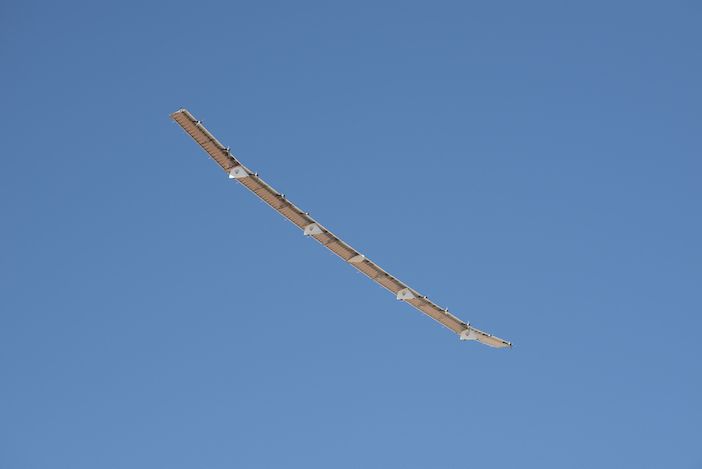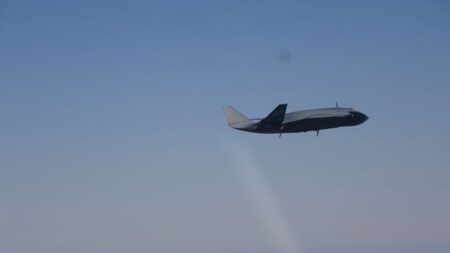HAPSMobile has flown its solar-powered high-altitude drone higher and for longer time during a second test flight on October 23, 2019 at NASA’s Armstrong Flight Research Center in California.
HAPSMobile is a joint venture between Japan’s SoftBank and USA-based aerospace developer AeroVironment. The company is developing a solar-powered unmanned aircraft capable of staying in the air for months at a time.
Hawk30 has a wingspan of 78m, a cruise speed of 110km/h and is designed to fly at altitudes of around 20km in the stratosphere. The drone is intended for applications such as providing communications.
During the test flight the drone reached altitudes higher than those of the previous flight, and flew continuously for around one hour and 30 minutes. The Hawk30 achieved more than two dozen test points, including 180-degree turns and further validation of avionics, power and propulsion performance.
The flight test team also simulated precise landing control on the runway, similar to its commercial operation concept.
Testing of Hawk30 is expected to shift to the Hawaiian island of Lanai next and is accelerating preparations to perform stratospheric test flights at Lanai by the end of March 2020.
Junichi Miyakawa, representative director and chief technical officer of SoftBank and president and CEO of HAPSMobile said, “We’re extremely pleased that the second test flight was a success. Seeing the HAWK30 fly gracefully, even under greater turbulence at higher altitudes, has given us confidence for future flights.
“We’ll carefully verify the data from this test and move forward with preparations to conduct stratospheric flight tests. We’ll continue to work toward our ultimate goal of bridging the world’s digital divide and revolutionizing mobile connectivity by leveraging the HAPS platform.”





